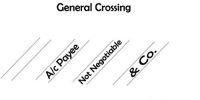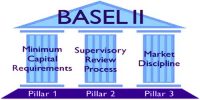Funded facilities are those facilities in which banks or financial institutions funds are involved. For example, running finance for the working capital requirement. Demand finance for Capital expenditure.
Funded Credit facilities –
(a) Working Capital Loans – they are generally of short duration (< 1 year). The duration may be longer if the working capital gestation period is longer e.g. Boeing.
(b) Overdraft Facility – revolving loans against the current account are called overdrafts or ODs which are unsecured in nature. The borrower can overdraw funds beyond available balance up to an agreed limit. Interest is payable only on the money used for the duration of withdrawal compounded daily. In some countries, a commitment fee is levied on the unutilized limits. ODs are not good for the banker since it is difficult to control the end use of funds, ensure repayment & there are high administrative costs. ODs affect the bank’s liquidity.
(c) Cash Credit (CC) Facility – A bank assesses the average value of inventory & receivables of a business. Based on these assets as security, a bank issues 60-70% of asset value as a limit on the cash credit facility. Just like an OD, a borrower can draw on this limit. The buffer of 30-40% which is kept by the bank is called Margin. The riskier the asset, the higher the margin. The interest on CC is usually linked to a benchmark rate & decided periodically: CC is secured in nature, unlike OD which is unsecured in nature.
(d) Working Capital Demand Loans (WCDL) – this is a short-term revolving loan facility given for the working capital requirement of the company. A bank will quote a rate on WCDL, depending on its current cost of funds to which the customer must agree. WCDL limit is fixed but the borrower must negotiate a rate with the bank every time he borrows. WCDL is more common with medium &large companies which have large working capital requirements, unlike CC which is common with small companies. Banks prefer WCDL more than CC since they have more control over the terms & interest rates which is useful in an environment where interest rates are fluctuating.
(e) Long-term loan – Banks provide these long-term loans to finance expansions; buy real estate or machinery.
(f) Trade Finance – Corporate banking facilitates international trade. Banks provide loans to the seller to bridge his funding requirements till he gets paid. This is similar to a working capital loan.
(g) Pre-shipment loans – this is working capital for purchasing raw materials, processing & packaging of export commodities. The most common form is packing credit where the exporter gets concessional interest rates.
(h) Post-shipment loans – these loans help exporters bridge their funding requirements when they export on deferred payment basis i.e. credit.















